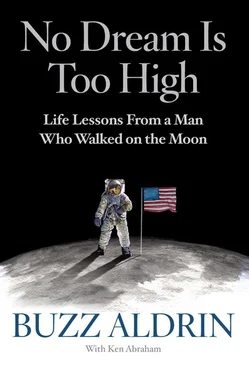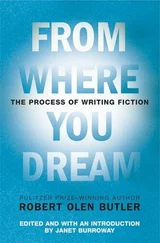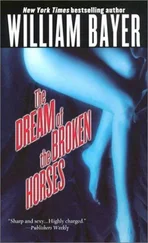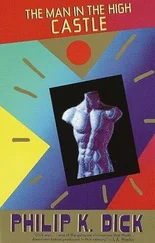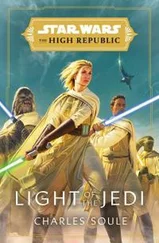During the early days of television and motion pictures, it was not uncommon to see a science fiction movie depicting an enormous spacecraft blasting off from Earth and landing on the Moon. That single spacecraft idea had become so embedded in people’s minds, rarely did anyone question how in the world we were going to send a massive rocket like that to the Moon, land on the surface, explore, then blast off again and return to Earth, where we’d need another safe landing. Even scientists were baffled, scratching their heads in frustration because everyone thought in terms of only one gigantic spacecraft.
Everyone, that is, except John Houbolt, a bright, clever NASA engineer. John came up with the concept of using two specialized spacecraft—a command/service module and a lunar landing module—rather than one heavy spaceship in our efforts to get to the Moon, land on the surface, and get back home. The command module would stay in orbit around the Moon while the lunar landing module would be equipped with a “descent” stage that could be left on the surface, as well as an “ascent” stage with its own engine for blasting off the Moon and then rendezvousing with the command module. This was especially important because the lunar lander’s rocket motors did not have to be nearly so large, since they would be needed only to power the ascent section until it rendezvoused with the command module for the return trip back to Earth.
It was a novel idea, and many people at NASA questioned John’s “fanciful notions,” but they finally realized the advantages of having two spacecraft rather than one huge one. John’s willingness to keep his mind open and to think creatively opened the door to whole new vistas of space exploration.
Another brilliant, open-minded engineer who worked with us on the Apollo program was Hubert (Hu) Davis. Although the astronauts training for a potential landing on the Moon might not have realized it early on, the lunar landing modules (LMs) were too heavy to safely land. Hubert Davis was the project manager for LM-5, and when he heard about the problem and that his spacecraft was not slated to land, he said to NASA, “We’ll work to reduce the weight, if you will consider putting LM-5 as the first lander.” Hu and his team went back to work. They tried everything they knew to do.
After five versions of the LM (LM-1 to LM-5), it was still too heavy. Hubert didn’t say, “Well, that’s too bad; that’s what the lander has to be, so deal with it.” No, just the opposite. Hubert Davis put his mind to work on every way possible to reduce the weight load of the lunar lander, considering everything from the metallic materials used on the outside “skin” of the lander to how many pens Neil and I carried aboard the spacecraft. Every ounce mattered.
When almost everyone said it was impossible, Hubert Davis found a way to lighten the weight of the LM, making it possible for LM-5 to land on the Moon. Because of Hu’s imaginative thinking, NASA began offering financial bonuses to aerospace companies and contractors who could reduce the weight of the LMs in production. Had Hu not found a way, Neil and I would not have attempted a landing during Apollo 11, and NASA would have been forced to wait for LM-6 and Apollo 12—or possibly even later—to land. So in a very real way, Hubert Davis made it possible for Neil and me to land on the Moon. Why? Because Hubert Davis kept his mind open to the possibilities.
* * *

INNOVATORS ARE OFTEN OUT OF SYNC with many people around them. No doubt about it—from Leonardo da Vinci to my friend Sir Richard Branson, owner of Virgin Galactic—some of history’s most creative people have been a bit quirky. Anyone who saw Albert Einstein trudging along the sidewalks of Princeton University with a briar pipe hanging out of his mouth might have assumed the odd fellow in the old, frumpy overcoat and socks that didn’t match was a hobo. Today, students at Princeton are still studying Einstein’s formulas and ideas, and his adage “Subtle is the Lord, but malicious He is not” is inscribed in the stone mantel of the fireplace in the mathematics building on campus. I guess I used many of Einstein’s ideas when I developed my own mathematical equations regarding space rendezvous.
Because of my fascination with rendezvous principles necessary for the lunar module to lift off the Moon’s surface and be reunited with the command module, some of my fellow astronauts thought I was obsessed with the subject. They called me “Dr. Rendezvous,” usually with respect, but sometimes with a hint of derision as well. I didn’t care; I knew I was a little out of sync with my buddies, but that was okay. I was doing what I loved.
Sometimes innovators come across as arrogant, stubborn, or unreasonable. I’m sorry to say that I probably did, too, while working as an astronaut. Think of people such as Elon Musk, the driving force behind SpaceX, the company upon whom America is currently relying to deliver supplies and equipment to the International Space Station. Or think of Jeff Bezos, who founded Amazon.com, or Steve Jobs, the whiz behind Apple’s success. As young men, they were out of sync with many of their peers; they saw things differently, wanted to do things differently. They refused to simply accept the “usual” way. Rather than seeing the world with a “that’s just the way things are” attitude, they developed an intense, indefatigable desire to improve the world by radically changing the way things could be done. We relish their successes today, acknowledging that these innovators and others like them have changed our world to fit their vision of how life can be better.
Average people tend to think about merely maintaining the status quo; unsuccessful people think about simply surviving. Innovators and explorers think about what might be possible.
* * *

PARENTS AND EDUCATORS OFTEN ASK me, “Buzz, how can we help foster the sort of innovation that took you to the Moon?”
First and foremost, it is important to understand that whether by nature or nurture, innovators approach the world differently. Keeping that in mind might help you to regard your boss with greater respect, or your artist friend, or the kid who wants to sit around playing his guitar all day long. Certainly, some people are born with innovation in their veins. I think I was. My father loved flying and exposed me to the possibilities of flight early in my life, but something inside me responded far beyond what my father might have imagined.
I also think that innovation can be encouraged when parents and educators understand that innovators often do not fit “the norm.” Innovators whose minds are open tend to have personality traits that others might regard as quirky or sometimes even “weird.” They are dreamers, and I am definitely one of them, so I know that innovators are rarely content merely to dream. They won’t stop there—especially if they receive some encouragement. They will become doers; they will make things happen. Innovators are usually much more self-confident than their peers; they are inner directed and willing to march to the beat of their own drums. But it sure helps having someone lay a hand on a shoulder or look the innovator in the eye and say, “I believe in you; you can do it.”
Often innovators are courageous and resilient, sometimes because they have had to develop such qualities in the face of adversity or opposition to their ideas. Almost always, they are risktakers, willing to try something new.
So understanding that the innovator’s personality causes him or her to be out of sync with others is tremendously important, especially when it comes to encouraging exploration of new concepts or new ways of doing things.
Читать дальше
